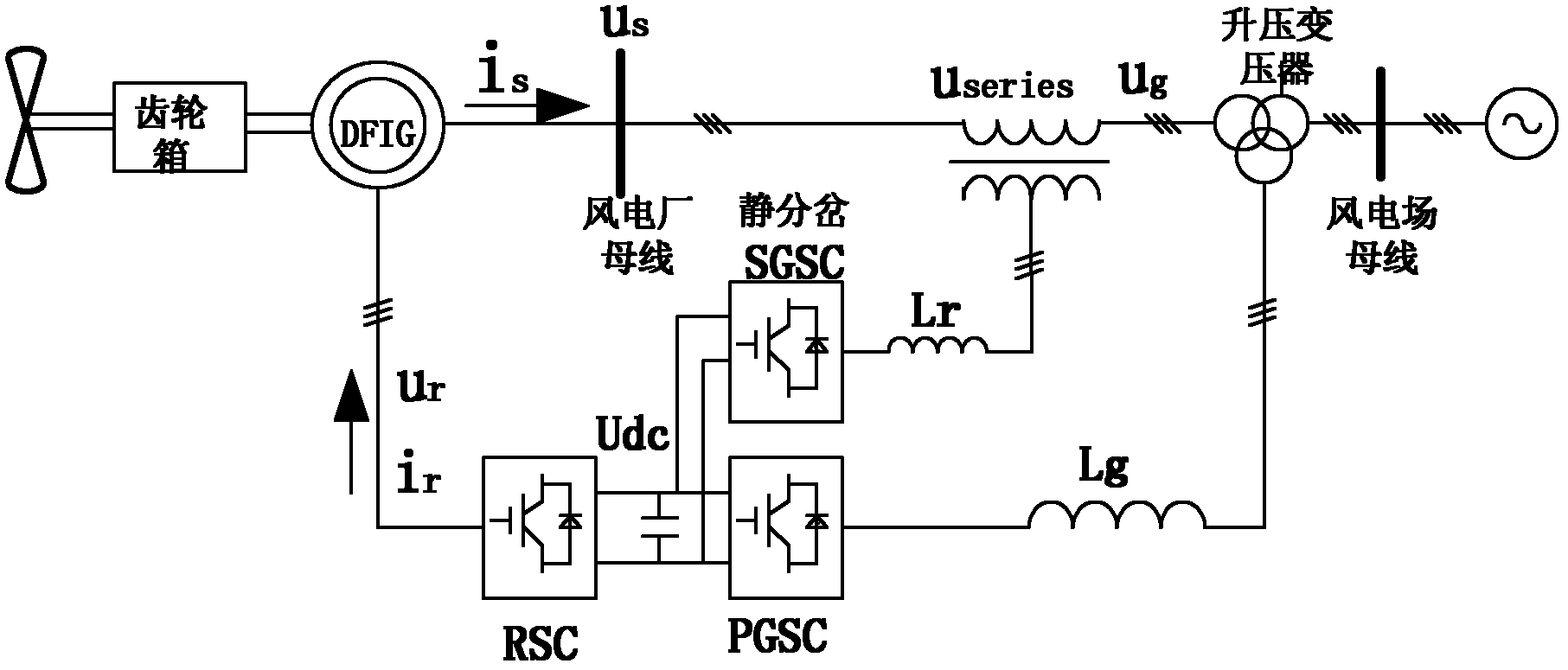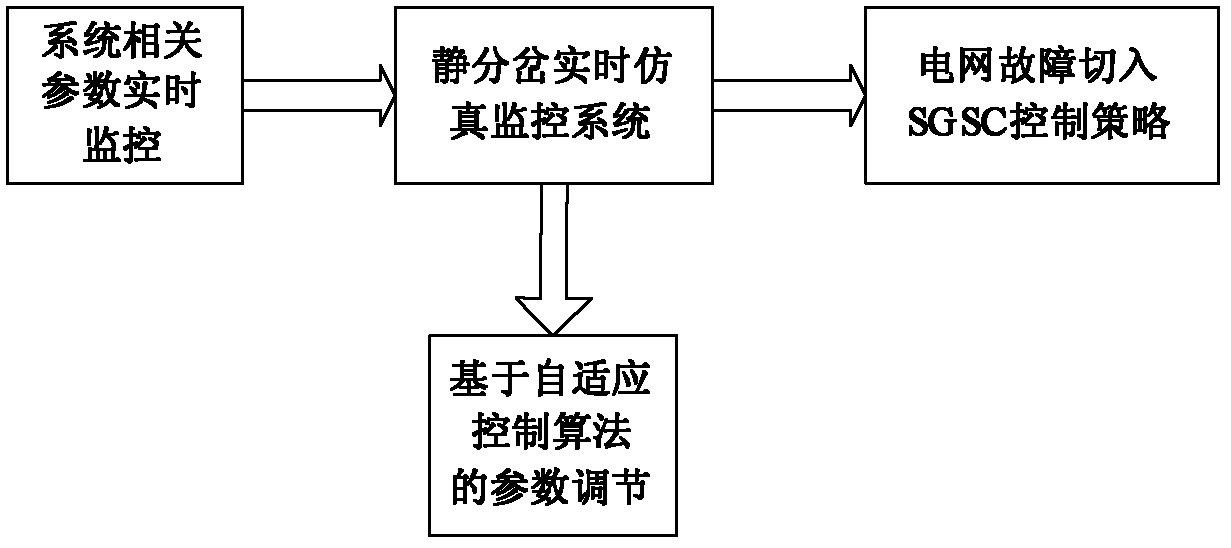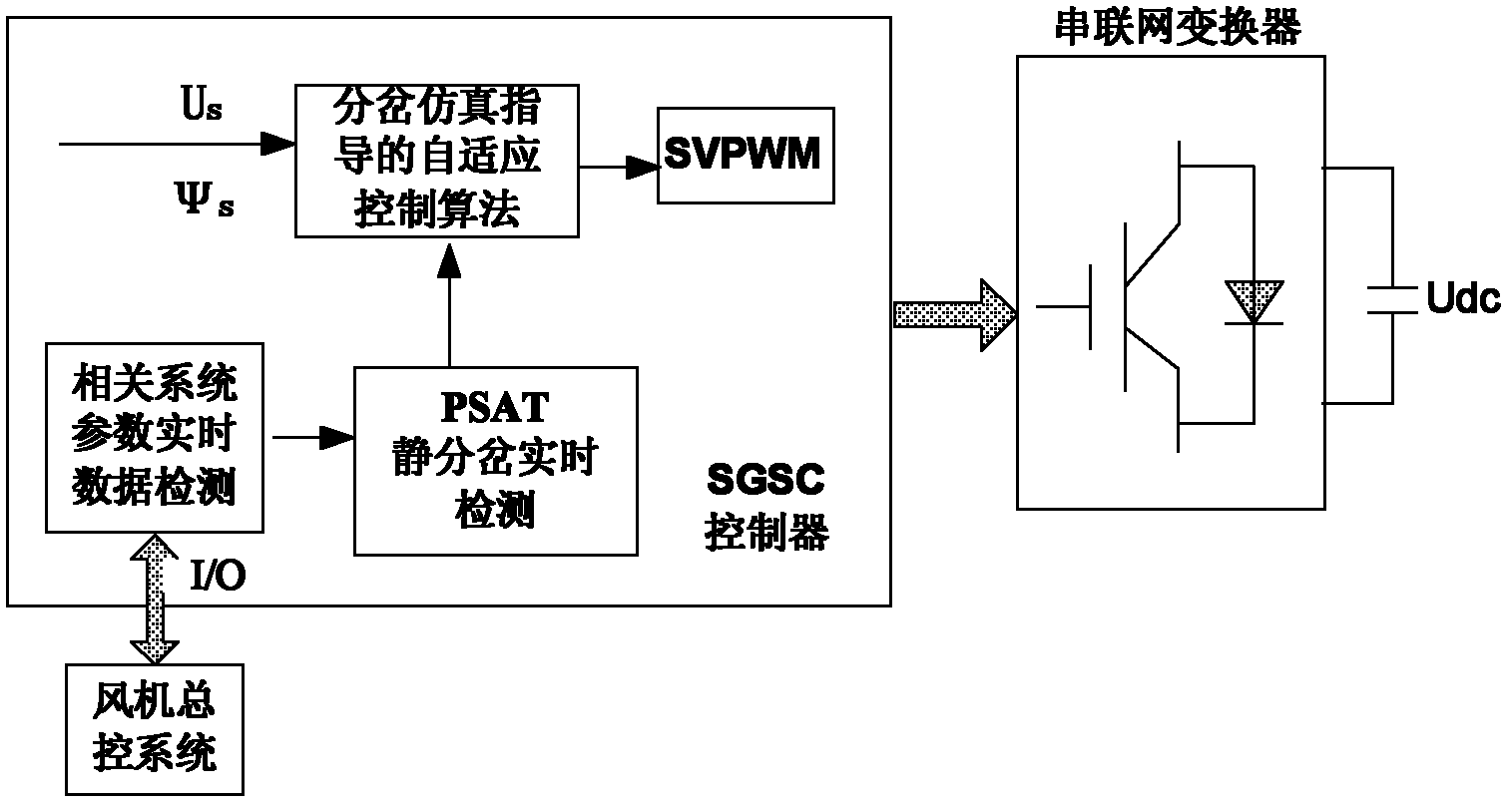A dfig wind power system low voltage ride through control method based on static bifurcation control sgsc
A low-voltage ride-through, wind power system technology, applied in control systems, control generators, wind power generation, etc., can solve the problems of uncontrollable electromagnetic torque of DFIG, unfavorable grid voltage stability, and severe fluctuations.
- Summary
- Abstract
- Description
- Claims
- Application Information
AI Technical Summary
Problems solved by technology
Method used
Image
Examples
Embodiment
[0027] Embodiment: A DFIG wind power system low voltage ride through control method based on static bifurcation control SGSC (see figure 2 ), characterized in that it comprises the following steps:
[0028] (1) Since SGSC shares a bus with PGSC (Parallel Grid-side Converter) and RSC, in the topology (see figure 1 ), the DFIG stator voltage space vector will become the composite vector of the grid voltage space vector and the series voltage space vector injected by the series transformer:
[0029] u s = u i + u g
[0030] where u s is the stator voltage space vector of the generator under the stationary coordinate axis; u r is the series voltage space vector injected by the series transformer; u g is the grid voltage space vector;
[0031] (2) With this topology, the low-voltage transition of DFIG can be realized by controlling the output voltage of SGSC (see figure 2 , image 3 );
[0032] (3) Select DFIG parameters, including DFIG stator flux linkage ψ s , AC ex...
PUM
 Login to View More
Login to View More Abstract
Description
Claims
Application Information
 Login to View More
Login to View More - R&D
- Intellectual Property
- Life Sciences
- Materials
- Tech Scout
- Unparalleled Data Quality
- Higher Quality Content
- 60% Fewer Hallucinations
Browse by: Latest US Patents, China's latest patents, Technical Efficacy Thesaurus, Application Domain, Technology Topic, Popular Technical Reports.
© 2025 PatSnap. All rights reserved.Legal|Privacy policy|Modern Slavery Act Transparency Statement|Sitemap|About US| Contact US: help@patsnap.com



